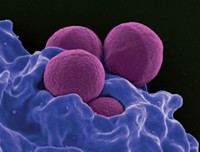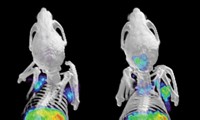Advertisement
Grab your lab coat. Let's get started
Welcome!
Welcome!
Create an account below to get 6 C&EN articles per month, receive newsletters and more - all free.
It seems this is your first time logging in online. Please enter the following information to continue.
As an ACS member you automatically get access to this site. All we need is few more details to create your reading experience.
Not you? Sign in with a different account.
Not you? Sign in with a different account.
ERROR 1
ERROR 1
ERROR 2
ERROR 2
ERROR 2
ERROR 2
ERROR 2
Password and Confirm password must match.
If you have an ACS member number, please enter it here so we can link this account to your membership. (optional)
ERROR 2
ACS values your privacy. By submitting your information, you are gaining access to C&EN and subscribing to our weekly newsletter. We use the information you provide to make your reading experience better, and we will never sell your data to third party members.
Analytical Chemistry
DNA Array Profiles Combat Wound Bacteria
Quick identification of pathogens could improve treatment
by Jyllian Kemsley
June 30, 2014
| A version of this story appeared in
Volume 92, Issue 26
A new microbial DNA detection array can find wound bacteria missed by standard culturing (J. Clin. Microbiol. 2014, DOI: 10.1128/jcm.00556-14). The results suggest that the approach could be used to quickly identify pathogens and appropriate treatments. The work was led by Nicholas A. Be and Crystal J. Jaing of Lawrence Livermore National Laboratory. They studied 124 samples taken from 61 wounds in 44 U.S. service members who were injured in combat. The array contains probes for 1,398 bacteria, but others may detect as many as 3,855 bacteria. Array assays can be completed in 24 hours. Using the array, Be, Jaing, and colleagues detected microorganisms in 51% of samples. Standard culturing turned up bacteria in only 35% of samples, likely because some bacteria do not grow well in culture. The researchers found that the presence of Pseudomonas species and Acinetobacter baumannii—and in particular an Acinetobacter plasmid implicated in drug resistance—was associated with failure of wounds to heal. In contrast, the presence of gastrointestinal bacteria species was associated with successful healing.




Join the conversation
Contact the reporter
Submit a Letter to the Editor for publication
Engage with us on Twitter